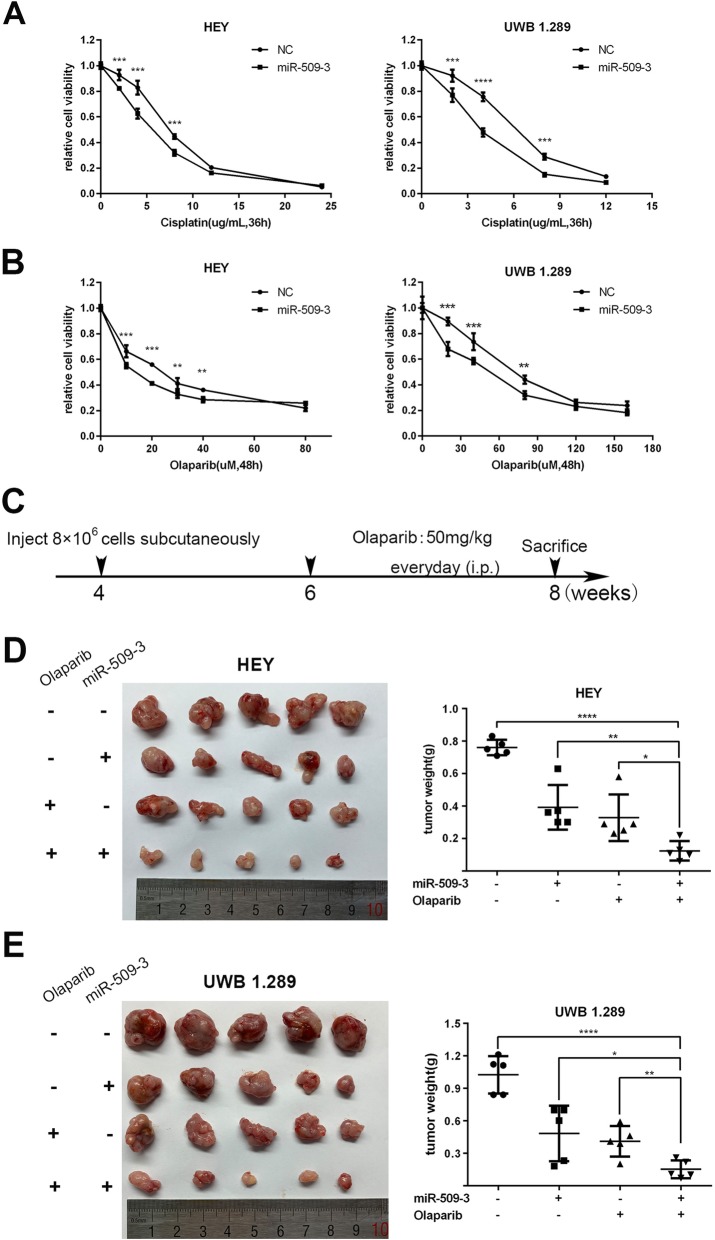Fig. 3.
MiR-509-3 augments ovarian cancer cell sensitivity to cisplatin and Olaparib in vivo and vitro. a Relative cell viability of HEY and UWB1.289 which were exposed to different dose of cisplatin for at least 36 h and then measured by MTT method. MiR-509-3 decreased relative cell viability at various drug concentrations (HEY: 2, 4, 8 μg/mL, P < 0.05; UWB1.289: 2, 4, 8 μg/mL, P < 0.05) when compared with NC cells. b Relative cell viability of HEY and UWB1.289 which were treated with different dose of Olaparib (HEY: 10, 20, 30, 40, 80 μM; UWB1.289: 20, 40, 80, 120, 160 μM) for over 48 h. MiR-509-3 increased the response to Olaparib in HEY (10, 20, 30, 40 μM, P < 0.05) and UWB1.289 (20, 40, 80 μM, P < 0.05) cell lines. c Experimental design of tumor formation test in BALB/c nude mice. Four-week-old mice were subcutaneously injected with HEY or UWB1.289 cells (8 × 106 cells per site) overexpressing miR-509-3 or corresponding NC. At the sixth week, tumor-bearing mice received intraperitoneal injection of Olaparib (50 mg/kg, once a day) for 2 weeks and then were sacrificed to harbor tumor tissues which were weighted and photographed. d, e At the eighth week of mice life, tumors harbored from each group were showed and the tumor weight was compared among four groups (data are mean ± SD, n = 5) in HEY and UWB1.289. Olaparib and miR-509-3 combined treatment indicated the lowest tumor weight (g) among four subgroups (HEY, 0.76 ± 0.05, 0.39 ± 0.14, 0.33 ± 0.14, 0.12 ± 0.06; UWB1.289, 1.02 ± 0.17, 0.48 ± 0.26, 0.41 ± 0.14, 0.15 ± 0.008)

